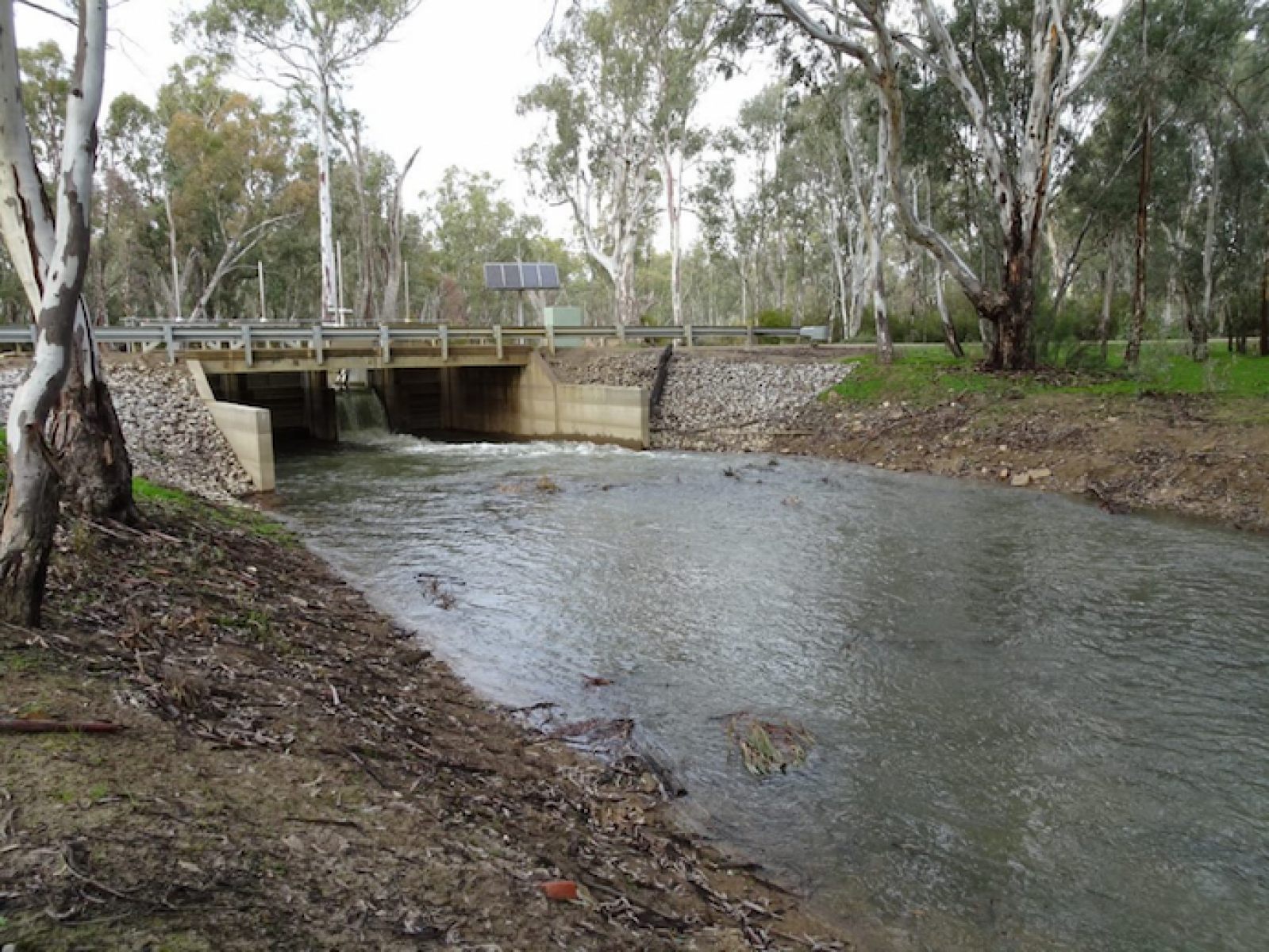On this page:
Types of water for the environment
There are 3 main ways we get water for the environment that benefit waterways differently. These are collectively known as the environmental water reserve and are protected under the Water Act 1989. The environmental water reserve is made up of environmental entitlements, passing flows and above cap water.
Environmental entitlements
Environmental entitlements are ongoing rights to a share of available water (inflows) in storages (dams). This water is then released to meet specific environmental needs.
Environmental entitlements are useful because they can be stored and released as required, however they are only a small volume of the water available for the environment.
Where possible, releases are timed for maximum effect for example:
- to lessen the impacts of drought on plants and animals that depend on flows to survive
- to trigger fish species to reproduce, bird breeding and regeneration of vegetation
- to reconnect Traditional Owners to water for cultural, economic, customary and spiritual purposes
- to provide recreational values.
The amount of water available depends on seasonal conditions.
Passing flows
Passing flows is the volume of water that water corporations or licensed users are obliged to provide from a storage, or past a diversion point, before water can be taken for other (consumptive) use. These obligations ensure water is taken sustainably and to lessen the impact on the environment.
Although small in volume, passing flows are the most secure form of water for the environment. It provides water in all but the most extreme conditions.
Passing flows are not just for the environment and may also be taken for other purposes such as domestic and stock use.
Above cap water
Above cap water is any water available in addition to the cap set on the maximum amount of water that can be taken from a water source or area. This type of water is available in both surface water and groundwater systems. In river systems regulated by dams and weirs, above cap water includes water that spills from storages if they are full. Above cap water can provide high flows that support valuable ecosystem functions.
Above cap water contributes the most water for the environment, but it can be a very unreliable source. It may only be available in wet years and is the first to disappear when rainfall and river flows decline. As this type of environmental water is the only type in unregulated waterways, these systems are particularly at risk in a drying climate.
Availability of above cap water will depend on the interaction of several factors, including:
- how much water is allocated to consumptive use
- how large water storages are compared with inflows
- where storages are located within the catchment.
Above cap water is not exclusively for the environment and may also be taken for other purposes such as domestic and stock use.

How is environmental water protected?
Between 1992 and 2012 the Victorian government converted the water rights of water corporations into bulk water entitlements. This indirectly defined environmental water rights by identifying the maximum volume of water allowed for consumption. Any additional water left in the waterway and not allowed for consumption is known as above cap water.
The bulk entitlement conversion process defined the obligations of water corporations:
- to manage water resources sustainably
- to minimise their impact on the environment.
As part of this obligation, a requirement for passing flows became a condition of the bulk entitlements. Passing flows are particularly valuable to the environment as they must be supplied before water can be taken for consumption.
At the later stages of the process, the creation of environmental entitlements occurred in some water systems. The Victorian Environmental Water Holder holds and manages these environmental entitlements.
Over the last 20 years, the volume of environmental entitlements has grown in various ways. These include:
- purchasing water from other users
- water savings projects.
More water is still needed for the environment. Government policy is now in place that facilitates water recovery through water savings projects, and projects to increase urban water supplies such as those committed to in sustainable water strategies.

Groundwater dependent ecosystems
Groundwater is the water found underground in the spaces within soil, sand and rock.
Some ecosystems, referred to as groundwater-dependent ecosystems (GDEs) rely on groundwater for all or part of their water needs. GDEs include:
- rivers
- estuaries
- wetlands
- terrestrial vegetation.
Caps are set for how much water can be taken from groundwater aquifers. These are set to ensure the sustainable take of water and reduce impacts on GDEs. These are in addition to the caps set on take of water from any connected river systems.
Some systems have a high level of connection between rivers and groundwater. As a result, increased groundwater extraction can reduce streamflow and affect GDEs.
Where a GDE relies on groundwater connected to surface water, the management approach needs to be integrated to protect that groundwater for the environmental values of the river or wetland. An example of an integrated surface water-groundwater management plan is the Upper Ovens River Water Supply Protection Area, the first such plan in Victoria.
The management of groundwater for environmental purposes is a more recent area of work. Early work has focused on GDEs of high environmental value and high risk and those that are most easily observed and monitored.
Effective and sustainable management of GDEs in Victoria requires improved knowledge of the distribution, condition and environmental values of GDEs. This includes information about groundwater and surface water interactions.
Improved knowledge will enable managers to adequately consider GDEs in groundwater management and allocation of groundwater for consumption.
Page last updated: 08/09/23
